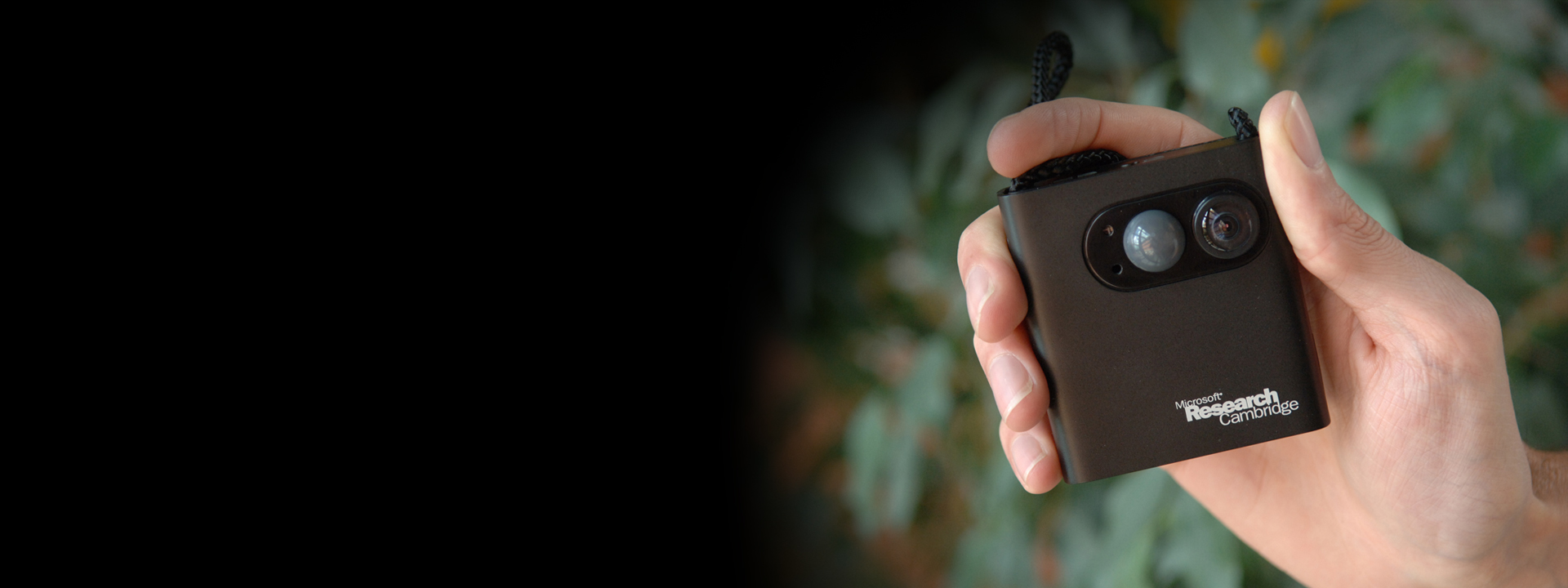SenseCam is a wearable camera that takes photos automatically. Originally conceived as a personal ‘Black Box’ accident recorder, it soon became evident that looking through images previously recorded tends to elicit quite vivid remembering of the original event. This exciting effect has formed the basis of a great deal of research around the world: there are over 200 papers based on work using SenseCam, the Vicon Revue (opens in new tab) and OMG Autographer (opens in new tab) (both produced for several years under license).
Highlights of the history of SenseCam, the Vicon Revue and the OMG Autographer include:
- The special SenseCam theme issue (opens in new tab) of the American Journal of Preventive Medicine from March 2013 and the special SenseCam issue (opens in new tab) of Memory in 2011.
- The man (opens in new tab) who’s worn a camera every day (opens in new tab)for a decade and has 16M life-log images.
- Articles about SenseCam in TIME Magazine (opens in new tab) and Science (opens in new tab). Other media coverage listed below.
- SenseCam was reported by BBC UK (opens in new tab) and Channel 9 Australia documentaries, and covered by James May (opens in new tab).
- The MSR SenseCam viewer and one from DCU (opens in new tab). The NTCIR-12 lifelog image dataset (opens in new tab) was recorded using Autographer.
- SenseCam has been on display in the London Science Museum (opens in new tab) for many years.
- A number of researchers and clinicians (opens in new tab) have recorded their thoughts about SenseCam.
- The SenseCam 2013 (opens in new tab), SenseCam 2012 (opens in new tab), SenseCam 2010 (opens in new tab) and SenseCam 2009 (opens in new tab) conference series, which has since transitioned in part to the LifeLogging Tools and Applications (LTA) workshop series (opens in new tab) held in conjunction with the annual ACM Multimedia conference.
- Watch the Time video (opens in new tab) and BBC Eyewitness program (opens in new tab).
- The original memory study and a follow-up fMRI study (opens in new tab) with the same patient.
For more information about SenseCam research please contact us at sensecam@microsoft.com

